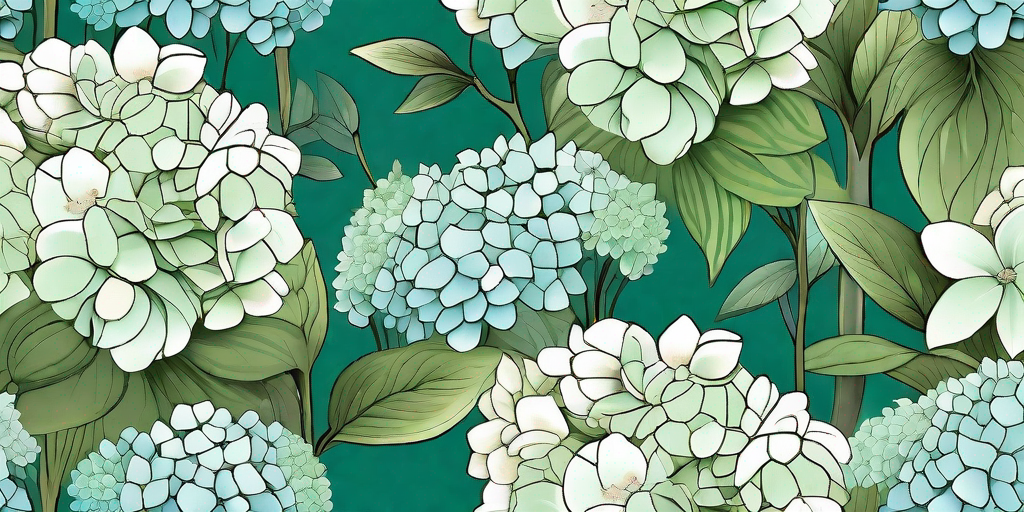
Welcome to the enchanting world of hydrangeas, a place where beauty is evergreen and charm is perennial. If you've ever strolled through a garden and found yourself captivated by clusters of vibrant, pom-pom-like flowers, you've likely had a run-in with the hydrangea. These botanical beauties have been stealing hearts and beautifying gardens for centuries, and it's high time we delve into their timeless allure.
The Hydrangea Hype: What Makes Them So Special?
Hydrangeas, with their lush foliage and large, showy flower heads, are the divas of the garden world. They demand attention, and boy, do they deserve it! But what exactly sets these floral wonders apart from the rest of the botanical bunch?
Well, for starters, hydrangeas are incredibly versatile. They come in a variety of shapes, sizes, and colors, making them a perfect fit for any garden aesthetic. Whether you're aiming for a quaint cottage garden or a modern minimalist landscape, there's a hydrangea for that!
Secondly, hydrangeas are known for their long blooming season. While other flowers may come and go, hydrangeas stick around, offering vibrant color and visual interest from spring through fall. Now that's what we call a hard-working flower!
The Many Faces of Hydrangeas
Hydrangeas are a diverse bunch, with over 70 species gracing our planet. From the bigleaf hydrangea, known for its ability to change color based on soil pH, to the oakleaf hydrangea, recognized by its unique, oak-like leaves, there's a hydrangea to suit every taste.
And let's not forget about the panicle hydrangea, the show-off of the hydrangea world. This variety boasts large, cone-shaped flower clusters that can reach up to 18 inches in length. Talk about making a statement!
How to Grow Your Own Hydrangea Heaven
Now that we've piqued your interest, you're probably wondering how to cultivate your own hydrangea haven. Fear not, dear reader, for we have all the tips and tricks you need to grow these floral beauties.
First things first, hydrangeas love the sun, but they appreciate a little afternoon shade. Too much heat can cause their lovely blooms to wilt, and nobody wants a droopy hydrangea. So, find a spot in your garden that gets morning sun and afternoon shade, and your hydrangeas will thank you.
Hydrangeas also prefer well-drained soil that's rich in organic matter. A good layer of mulch can help retain moisture and keep the roots cool. And don't forget to water regularly, especially during dry spells. Hydrangeas are thirsty plants, and they'll let you know if they're not getting enough to drink!
Pruning Like a Pro
Pruning hydrangeas can seem a bit daunting, but it's actually quite simple once you get the hang of it. The key is to know what type of hydrangea you're dealing with. Some hydrangeas bloom on old wood, while others bloom on new wood. Knowing the difference can save you from a pruning disaster.
For hydrangeas that bloom on old wood, like bigleaf and oakleaf hydrangeas, it's best to prune right after they finish blooming. This gives the plant plenty of time to produce new growth for next year's blooms.
For hydrangeas that bloom on new wood, like panicle and smooth hydrangeas, you can prune in late winter or early spring. These varieties will produce blooms on the new growth that emerges in the spring.
Hydrangea FAQs
Still got questions? We've got answers! Here are some of the most frequently asked questions about hydrangeas.
Why are my hydrangea leaves turning yellow?
Yellow leaves can be a sign of overwatering or poor drainage. Make sure your hydrangeas are planted in well-drained soil and try to avoid overwatering. Remember, hydrangeas like to be moist, not waterlogged!
Why aren't my hydrangeas blooming?
There could be several reasons for this. It could be that your hydrangeas aren't getting enough sunlight, or they could be planted in poor soil. Improper pruning can also affect blooming. Make sure you're pruning at the right time and not cutting off next year's flower buds!
Can I change the color of my hydrangeas?
Yes, you can! The color of some hydrangeas, particularly bigleaf hydrangeas, can be influenced by the pH of the soil. Acidic soil (pH below 7) will produce blue flowers, while alkaline soil (pH above 7) will produce pink flowers. You can adjust your soil's pH with garden lime or aluminum sulfate.
Conclusion
There you have it, folks! A comprehensive guide to the timeless beauty of evergreen hydrangeas. From their diverse range of shapes and colors to their long blooming season, it's no wonder these plants have captured the hearts of gardeners worldwide.
So why not give hydrangeas a go? With their stunning blooms and easy-care nature, they're sure to bring a touch of heaven to your garden. And remember, a hydrangea a day keeps the garden blues away!















